-
Steps to integrating 2D transistors into the back-end of line Nat. Electron. (IF 40.9) Pub Date : 2025-12-05 Peigen Zhang, He Tian
-
An Ising machine with unified classical and probabilistic bits Nat. Electron. (IF 40.9) Pub Date : 2025-12-05 Matthew Parker
-
Monolithic complementary field-effect transistors with a twist Nat. Electron. (IF 40.9) Pub Date : 2025-12-05 Yan Huang
-
3D DRAM with stacked oxide-semiconductor channel transistors Nat. Electron. (IF 40.9) Pub Date : 2025-12-05 Taeyoung Song, Asif Islam Khan
-
-
A silicon retina that works with spikes Nat. Electron. (IF 40.9) Pub Date : 2025-12-05 Shaocong Wang, Yuchao Yang
-
Publisher Correction: Non-volatile methylammonium chloride substitution for tin halide perovskite transistors Nat. Electron. (IF 40.9) Pub Date : 2025-12-02 Hansol Park, Cheong Beom Lee, Jongmin Lee, Seon-Jeong Lim, Bum Ho Jeong, Hakjun Kim, Seong Jae Lee, Hayoung Oh, Hyungju Ahn, Do Hwan Kim, Kyeounghak Kim, Hui Joon Park
-
Artificial neurons beyond spikes Nat. Electron. (IF 40.9) Pub Date : 2025-12-02 Carlo Vittorio Cannistraci, Eunhye Baek
-
A step-by-step to quantum-grade monolayers Nat. Electron. (IF 40.9) Pub Date : 2025-11-27 Sunhao Shi, Jui-Han Fu, Vincent Tung
-
Single-crystalline monolayer semiconductors with coherent quantum transport by vicinal van der Waals epitaxy Nat. Electron. (IF 40.9) Pub Date : 2025-11-27 Gunho Moon, Suk-Ho Lee, Hyunje Cho, Heewon Park, Heonsu Ahn, Chang-Won Choi, Sera Yang, Seung-Hyun Shin, Jinjae Kim, Jong Yun Choi, Seok Young Min, Sumin Lee, Hyunjin Jung, Jaeyoung Kim, Jewook Park, Han Woong Yeom, Gil-Ho Lee, Myungchul Oh, Jong-Hoon Kang, Hyunyong Choi, Cheol-Joo Kim, Jonghwan Kim, Si-Young Choi, Moon-Ho Jo
-
-
Micro-aerial vehicles that can dock vertically Nat. Electron. (IF 40.9) Pub Date : 2025-11-19 Matthew Parker
-
Single-mode terahertz sources with integrated graphene plasmons Nat. Electron. (IF 40.9) Pub Date : 2025-11-19 Katharina Zeissler
-
Making copper substrates that are ultraflat Nat. Electron. (IF 40.9) Pub Date : 2025-11-19 Matthew Parker
-
System-level integration of 2D electronics Nat. Electron. (IF 40.9) Pub Date : 2025-11-19 Katharina Zeissler
-
A travelling-wave parametric amplifier isolator Nat. Electron. (IF 40.9) Pub Date : 2025-11-14 Arpit Ranadive, Bekim Fazliji, Gwenael Le Gal, Giulio Cappelli, Guilliam Butseraen, Edgar Bonet, Eric Eyraud, Sina Böhling, Luca Planat, A. Metelmann, Nicolas Roch
-
Parametric amplifiers for simplified quantum readout Nat. Electron. (IF 40.9) Pub Date : 2025-11-14 Nikita Klimovich
-
Free-standing thermosets shaped by laser-assisted 3D printing Nat. Electron. (IF 40.9) Pub Date : 2025-11-13 Qiyao Huang, Zijian Zheng
-
Stacked two-dimensional semiconductors from a direct bonding–debonding process Nat. Electron. (IF 40.9) Pub Date : 2025-11-07
-
Laser-assisted direct three-dimensional printing of free-standing thermoset devices Nat. Electron. (IF 40.9) Pub Date : 2025-11-07 Qibin Zhuang, Yiyi Zhang, Xin Liu, Wei Xiao, Zhiwen Chen, Lianjie Lu, Zhengmao Ding, Songyue Chen, Qinnan Chen, Shubham Patel, Libo Zhao, Daoheng Sun, Cunjiang Yu, Liwei Lin, Dezhi Wu
The three-dimensional printing of thermoset materials is of use in the development of flexible electronics and soft robotics. However, the process typically involves the deposition and removal of supporting materials that require extensive cycles of pre- and post-processing. Here we describe a three-dimensional printing method for constructing functional and arbitrary free-standing thermoset structures
-
Scalable production of stretchable electronic fibres for smart textiles Nat. Electron. (IF 40.9) Pub Date : 2025-11-06
-
Ghiblification, generative AI and the quest for fair circuits of creativity Nat. Electron. (IF 40.9) Pub Date : 2025-11-06 WooJung Jon
-
Towards cognitive control of intelligent surfaces Nat. Electron. (IF 40.9) Pub Date : 2025-11-05 Alessio Monti
-
A subnanolitre tetherless optoelectronic microsystem for chronic neural recording in awake mice Nat. Electron. (IF 40.9) Pub Date : 2025-11-03 Sunwoo Lee, Shahaboddin Ghajari, Sanaz Sadeghi, Yumin Zheng, Hind Zahr, Alejandro J. Cortese, Wenchao Gu, Kibaek Choe, Aaron Mok, Melanie Wallace, Rui Jiao, Chunyan Wu, Jesse C. Werth, Weiru Fan, Praneeth Mogalipuvvu, Ju Uhn Park, Shitong Zhao, Conrad Smart, Thomas A. Cleland, Melissa R. Warden, Jan Lammerding, Tianyu Wang, Jesse H. Goldberg, Paul L. McEuen, Chris Xu, Alyosha C. Molnar
The long-term recording of neural activity could be used to understand complex behaviours and disorders. However, the development of technology capable of such measurements faces a variety of technical challenges, including the relative motion between recording electrodes and tissue and the excessive displaced volume from implanted electronics. Here we report a subnanolitre-volume tetherless optoelectronic
-
A self-controlled reconfigurable intelligent surface inspired by optical holography Nat. Electron. (IF 40.9) Pub Date : 2025-10-29 Jieao Zhu, Ze Gu, Qian Ma, Linglong Dai, Tie Jun Cui
Reconfigurable intelligent surfaces operating at microwave frequencies are of potential use in the development of the sixth generation of wireless communications technology. Such surfaces could, in particular, be used to reprogram the wireless propagation channels in controlled ways and thus provide low-cost wireless capacity boosting, coverage extension and enhanced energy efficiency. To reprogram
-
Electronic fibres via the thermal drawing of liquid-metal-embedded elastomers Nat. Electron. (IF 40.9) Pub Date : 2025-10-28 Stella Laperrousaz, Xin Chen, Marion Cleusix, Lucas Jourdan, Laurène Tribolet, Fabien Sorin
Soft electronic fibres are potential building blocks for a variety of emerging technologies including smart textiles and wearable health monitors. However, it remains a challenge to fabricate fibres that combine conductive and dielectric domains in complex architectures in a simple and scalable way. Here we show that a thermal drawing approach can be used to fabricate stretchable fibre-based sensors
-
Spintronic digital compute-in-memory macro for efficient artificial intelligence Nat. Electron. (IF 40.9) Pub Date : 2025-10-28
-
Breaking the submicrometre barrier of printed electronics Nat. Electron. (IF 40.9) Pub Date : 2025-10-27 Jun-Chan Choi, Seungjun Chung
-
-
-
Direct bonding and debonding of two-dimensional semiconductors Nat. Electron. (IF 40.9) Pub Date : 2025-10-27 Jieying Liu, Jiaojiao Zhao, Tong Li, Depeng Ji, Liyan Dai, Lu Li, Zheng Wei, JiaWei Li, Qinqin Wang, Hua Yu, Lanying Zhou, Yutong Chen, Fanfan Wu, Mingtong Zhu, Huacong Sun, Yun Li, Songge Zhang, Jinpeng Tian, Xingchao Zhang, Nianpeng Lu, Xuedong Bai, Zexian Cao, Shenghuang Lin, Shuopei Wang, Dongxia Shi, Na Li, Luojun Du, Wei Yang, LeDe Xian, Guangyu Zhang
Two-dimensional (2D) semiconductors are promising building blocks for advanced electronic devices. However, the fabrication of high-quality 2D semiconductor wafers with engineered layers remains a challenge. Here we describe a direct wafer bonding and debonding method that can be applied to semiconductor monolayers that have been grown epitaxially on high-adhesion substrates such as sapphire. The process
-
The development of carbon-neutral data centres in space Nat. Electron. (IF 40.9) Pub Date : 2025-10-27 Ablimit Aili, Jihwan Choi, Yew Soon Ong, Yonggang Wen
-
A spiking artificial neuron based on one diffusive memristor, one transistor and one resistor Nat. Electron. (IF 40.9) Pub Date : 2025-10-27 Ruoyu Zhao, Tong Wang, Taehwan Moon, Yichun Xu, Jian Zhao, Piyush Sud, Seung Ju Kim, Han-Ting Liao, Ye Zhuo, Rivu Midya, Shiva Asapu, Dawei Gao, Zixuan Rong, Qinru Qiu, Cynthia Bowers, Krishnamurthy Mahalingam, S. Ganguli, A. K. Roy, Qing Wu, Jin-Woo Han, R. Stanley Williams, Yong Chen, J. Joshua Yang
Neuromorphic computing could be used to create artificial intelligence with high compactness and efficiency. However, complementary metal–oxide–semiconductor (CMOS) circuits are inherently different to biological neurons, and intricate CMOS circuits are needed to realize neuromorphic behaviours. Diffusive memristors are based on ion dynamics and have similarities with biological neurons. They could
-
An implantable CMOS deep-brain fluorescence imager with single-neuron resolution Nat. Electron. (IF 40.9) Pub Date : 2025-10-27 Sinan Yilmaz, Jaebin Choi, Ilke Uguz, Jongwoon Kim, Alejandro Akrouh, Adriaan J. Taal, Victoria Andino-Pavlovsky, Heyu Yin, Jason D. Fabbri, Laurent Moreaux, Michael Roukes, Kenneth L. Shepard
Optical imaging offers a number of advantages over electrophysiology including cell-type specificity. However, its application has been limited to the investigation of shallow brain regions (less than 2 mm) because of the light scattering property of brain tissue. Passive optical conduits, such as graded-index lenses and waveguides, have permitted access to deeper locales but with restricted resolution
-
A tale of microrobot communication Nat. Electron. (IF 40.9) Pub Date : 2025-10-20 Katharina Zeissler
-
Implantable fibres made of rolled-up electronics Nat. Electron. (IF 40.9) Pub Date : 2025-10-20 Yan Huang
-
Metaphotonic photodetectors for direct Stokes quantification Nat. Electron. (IF 40.9) Pub Date : 2025-10-20 Xingsi Liu, Yinzhu Chen, Xianghong Kong, Weixin Liu, Zhenhua Ni, Junpeng Lu, Qi Jie Wang, Chengkuo Lee, Jingxuan Wei, Cheng-Wei Qiu
Metaphotonics uses nanoengineered materials to manipulate the electromagnetic fields and is of use in multidimensional optoelectronic applications such as Stokes detection. Machine learning algorithms are often used in the device design and post-signal processing of these systems. During post-signal processing, such algorithms can be used to reconstruct the physical quantities from multiparameter optical
-
-
Non-volatile methylammonium chloride substitution for tin halide perovskite transistors Nat. Electron. (IF 40.9) Pub Date : 2025-10-17 Hansol Park, Cheong Beom Lee, Jongmin Lee, Seon-Jeong Lim, Bum Ho Jeong, Hakjun Kim, Seong Jae Lee, Hayoung Oh, Hyungju Ahn, Do Hwan Kim, Kyeounghak Kim, Hui Joon Park
Tin halide perovskites are a potential p-type channel material for thin-film transistors due to their high room-temperature hole mobility and easy processability. However, creating a high-quality thin film with a three-dimensional tin halide perovskite is challenging due to its inherent instability and defect density. Here we show that the coordinated control of A-site cations and X-site anions in
-
Capillary flow printing of submicrometre carbon nanotube transistors Nat. Electron. (IF 40.9) Pub Date : 2025-10-17 Brittany N. Smith, Faris M. Albarghouthi, James L. Doherty, Xuancheng Pei, Quentin Macfarlane, Matthew Salfity, Daniel Badia, Marc Pascual, Pascal Boncenne, Nathan Bigan, Amin M’Barki, Aaron D. Franklin
Printed transistors have a wide range of applications, but the limited resolution of printing techniques (10–30 µm) has been a barrier to utility and scalability. Printed submicrometre channel lengths have previously been achieved. However, this has required chemical processes or tedious post-processing, which limits applicability. Here we show that capillary flow printing can create submicrometre
-
Third-party certification of high mobility values in perovskite transistors Nat. Electron. (IF 40.9) Pub Date : 2025-10-17 Yuanyuan Hu, Lang Jiang
-
Three-dimensional integrated hybrid complementary circuits for large-area electronics Nat. Electron. (IF 40.9) Pub Date : 2025-10-17 Saravanan Yuvaraja, Mohamad Insan Nugraha, Qiao He, Leo Raj Solay, Patsy Arely Miranda Cortez, Na Xiao, Martin Heeney, Thomas D. Anthopoulos, Xiaohang Li
The development of low-power computing sectors requires compact, power-efficient and high-performance integrated circuits. Hybrid technology that combines n-type metal oxide thin-film transistors and p-type organic thin-film transistors offers a potential solution. However, increasing the transistor density of these systems through vertical stacking is challenging due to issues related to thermal budget
-
A lossless and fully parallel spintronic compute-in-memory macro for artificial intelligence chips Nat. Electron. (IF 40.9) Pub Date : 2025-10-16 Humiao Li, Zheng Chai, Weirong Dong, Junjie He, Ruijie Peng, Shiheng Li, Zhen Kong, Xihui Yuan, Xianwang Wang, Zhengke Yang, Haoran Lyu, Haofeng Yu, Xue Zhou, Jiamin Li, Feichi Zhou, Yida Li, Zongben Xu, Tai Min, Longyang Lin
Non-volatile compute-in-memory macros can reduce data transfer between processing and memory units, providing fast and energy-efficient artificial intelligence computations. However, the non-volatile compute-in-memory architecture typically relies on analogue computing, which is limited in terms of accuracy, scalability and robustness. Here we report a 64-kb non-volatile digital compute-in-memory macro
-
A terahertz nonlinear diode chain based on an asymmetric double-layer topology Nat. Electron. (IF 40.9) Pub Date : 2025-10-16 Hongji Zhou, Tianchi Zhou, Yaxin Zhang, Hongxin Zeng, Shixiong Liang, Jun Zhou, Huajie Liang, Lin Huang, Sen Gong, Yazhou Dong, Jingrui Liang, Hailong Guo, Zhihong Feng, Ziqiang Yang, Daniel M. Mittleman
Frequency multiplier devices based on Schottky barrier diodes can be used to generate terahertz radiation, offering high power output and potential integration into all-solid-state systems. However, the scaling of the output power of such devices is often limited by the power handling capacity of a single diode. A connected chain of Schottky barrier diodes, together with a power combining approach
-
Hybrid memory to empower edge AI Nat. Electron. (IF 40.9) Pub Date : 2025-10-15 Dashan Shang, Qing Luo
-
Precise and scalable analogue matrix equation solving using resistive random-access memory chips Nat. Electron. (IF 40.9) Pub Date : 2025-10-13 Pushen Zuo, Qishen Wang, Yubiao Luo, Ruiqing Xie, Shiqing Wang, Zezhi Cheng, Lin Bao, Zongwei Wang, Yimao Cai, Ru Huang, Zhong Sun
Precision has long been the central bottleneck of analogue computing. Bit-slicing or analogue compensation can be used to perform matrix–vector multiplication with precision, but solving matrix equations using such techniques is challenging. Here we describe a precise and scalable analogue matrix inversion solver. Our approach uses an iterative algorithm that combines analogue low-precision matrix
-
Sweat sensors that won’t catch your drift Nat. Electron. (IF 40.9) Pub Date : 2025-10-13 Yizhou Zhong, Sahika Inal
-
Lowering the barrier to organic tunnel transistors Nat. Electron. (IF 40.9) Pub Date : 2025-10-08 Hans Kleemann
-
A clean van der Waals interface between the high-k dielectric zirconium oxide and two-dimensional molybdenum disulfide Nat. Electron. (IF 40.9) Pub Date : 2025-10-06 Han Yan, Yan Wang, Yang Li, Dibya Phuyal, Lixin Liu, Hailing Guo, Yuzheng Guo, Tien-Lin Lee, Minhyuk Kim, Hu Young Jeong, Manish Chhowalla
Two-dimensional transition metal dichalcogenide semiconductors possess ideal attributes for meeting industry scaling targets for transistor channel technology. However, the development of scaled field-effect transistors (FETs) requires industry-compatible gate dielectrics with low equivalent oxide thicknesses. Here we show that zirconium oxide (ZrO2)—an industry-compatible high-dielectric-constant
-
Skin-like drift-free biosensors with stretchable diode-connected organic field-effect transistors Nat. Electron. (IF 40.9) Pub Date : 2025-10-03 Chuanzhen Zhao, Jaeho Park, Desirée Maulà, Yujia Yuan, Donglai Zhong, Weichen Wang, Qianhe Liu, Changhao Xu, Yu Zheng, Rachael K. Mow, Ying Jiang, Chengyi Xu, Hao Lyu, Lukas Michalek, Arielle Berman, Yuanwen Jiang, Shiyuan Wei, Chenxin Zhu, Can Wu, Alex Abramson, Eunyoung Kim, Xiaozhou Ji, Zhiao Yu, Jiuyun Shi, Muhammad Khatib, Baiyu Shi, Zhenan Bao
Biosensors based on organic field-effect transistors can offer mechanical flexibility, stretchability and operational stability for conformal on-skin monitoring. However, bending, stretching, moisture and temperature changes can lead to signal artefacts and drifts. Here we report skin-like drift-free biosensors based on stretchable diode-connected organic field-effect transistors. Our approach relies
-
Terahertz metal–oxide–semiconductor transistors based on aligned carbon nanotube arrays Nat. Electron. (IF 40.9) Pub Date : 2025-10-02 Jianshuo Zhou, Zipeng Pan, Li Ding, Lin Xu, Xiaohan Cheng, Haitao Li, Fenfa Yao, Chuanhong Jin, Maguang Zhu, Lijun Liu, Huiwen Shi, Zhiyong Zhang, Lian-Mao Peng
Films of aligned semiconducting carbon nanotubes could be used to build complementary metal–oxide–semiconductor field-effect transistors for digital integrated circuits and radio-frequency transistors for terahertz analogue integrated circuits. However, the operating frequencies of such devices remains too low for potential application in the sixth generation of wireless communications. Here we report
-
Organic thin-film tunnel transistors Nat. Electron. (IF 40.9) Pub Date : 2025-09-29 Wei Deng, Xiujuan Zhang, Zhenjun Lu, Yujian Zhang, Fengquan Qiu, Yongji Wang, Haoyu Jiang, Xiaobin Ren, Yiming Wu, Xian-Kai Chen, Henning Sirringhaus, Jiansheng Jie, Xiaohong Zhang
High-performance and low-power thin-film transistor technology is needed for the development of wearable electronics and the Internet of Things. However, the thermionic limit of the subthreshold swing sets an upper bound on the performance of such systems. Here we report a subthermionic organic thin-film tunnel transistor based on interfacial molecule decoupling. In these devices, minimized gap states
-
-
A ferroelectric–memristor memory for both training and inference Nat. Electron. (IF 40.9) Pub Date : 2025-09-22 Michele Martemucci, François Rummens, Yannick Malot, Tifenn Hirtzlin, Olivier Guille, Simon Martin, Catherine Carabasse, Adrien F. Vincent, Sylvain Saïghi, Laurent Grenouillet, Damien Querlioz, Elisa Vianello
Developing artificial intelligence systems that are capable of learning at the edge of a network requires both energy-efficient inference and learning. However, current memory technology cannot provide the necessary combination of high endurance, low programming energy and non-destructive read processes. Here we report a unified memory stack that functions as a memristor as well as a ferroelectric
-
Thermally stable β-tungsten for spin–orbit torque magnetic random-access memory Nat. Electron. (IF 40.9) Pub Date : 2025-09-19
-
An analogue computer for AI and optimization Nat. Electron. (IF 40.9) Pub Date : 2025-09-19 Katharina Zeissler
-
Making black phosphorus nanoribbons from bulk Nat. Electron. (IF 40.9) Pub Date : 2025-09-16 Matthew Parker
-
Boron nitride memristors built directly on CMOS Nat. Electron. (IF 40.9) Pub Date : 2025-09-16 Yan Huang
-
Ingestible sensors for redox balance Nat. Electron. (IF 40.9) Pub Date : 2025-09-15 Khalil B. Ramadi
-
Probabilistic computers based on digital logic and magnetic nanodevices Nat. Electron. (IF 40.9) Pub Date : 2025-09-15 Brandon Zink




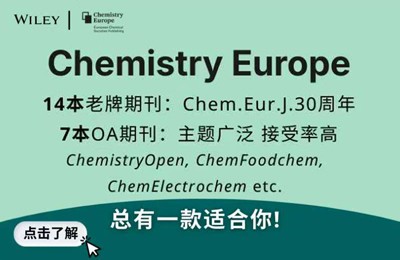




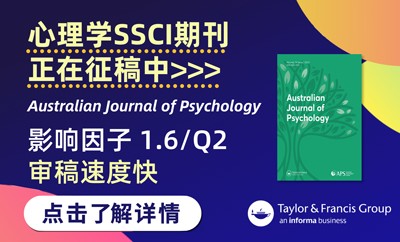



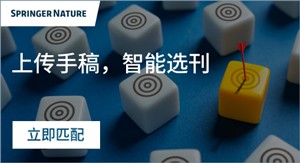
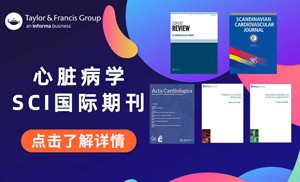




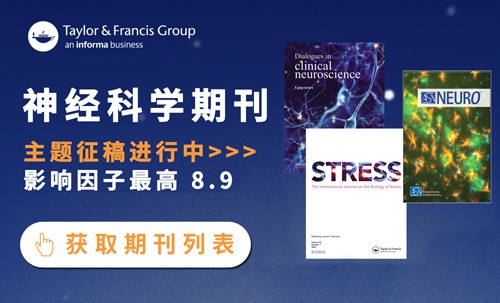
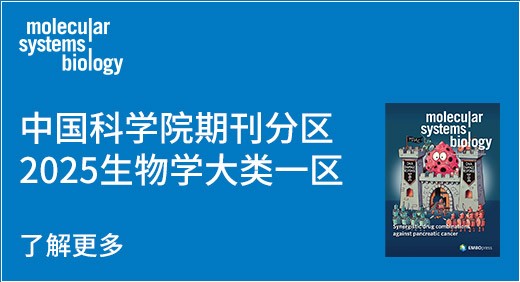
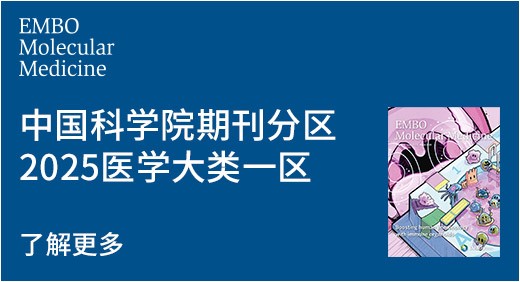

































 京公网安备 11010802027423号
京公网安备 11010802027423号